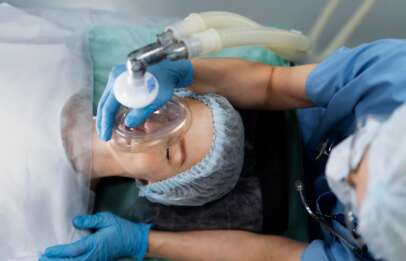
Kavya Hospital
Treatments
We are committed to offering compassionate and modern gynecological and family planning services for women at every stage of life.

Antenatal care, also known as prenatal care, refers to the medical care and support provided to pregnant women before the birth of their child.

A high-risk pregnancy refers to a pregnancy in which there is an increased likelihood of complications for the mother, the baby, or both.

There are several medical disorders that can occur during pregnancy, which may pose risks to the health of the mother and the developing baby.

Infertility treatment refers to the medical interventions and procedures aimed at helping couples or individuals who are experiencing difficulty in conceiving a child.

A fibroid uterus, also known as uterine fibroids or leiomyomas, refers to the presence of noncancerous growths in the uterus.

Endometriosis is a chronic and often painful condition in which the tissue that normally lines the inside of the uterus, called the endometrium, grows outside the uterus.

An ovarian cyst is a fluid-filled sac that forms on or within an ovary. Ovarian cysts are quite common and can occur at any age

Hysteroscopy is a minimally invasive surgical procedure that allows a doctor to examine the inside of the uterus using a thin, lighted instrument called a hysteroscope.

Hysterectomy is a surgical procedure in which the uterus is removed. There are different approaches to performing a hysterectomy, including abdominal, vaginal, and laparoscopic methods.

Polycystic ovary syndrome (PCOS) is a hormonal disorder that can affect adolescent girls.

Menopause is a natural biological process that marks the end of a woman’s reproductive years.

Pregnancy counselling is a supportive service provided to individuals or couples who are considering pregnancy, are currently pregnant, or have recently experienced a pregnancy loss.

Painless delivery, also known as pain relief during childbirth, is a common request from many expectant mothers.

Tubal recanalization, also known as tubal anastomosis or tubal reversal, is a surgical procedure performed to restore fertility in women who have undergone tubal ligation or sterilization.

Family planning refers to the practice of deliberately controlling the number and spacing of children in a family, as well as making informed decisions about reproductive health.

Cosmetic surgery for women refers to surgical procedures performed to enhance or alter a woman’s physical appearance.
contact our clinic
Contact Us Now

Visit :
Gynecology is a crucial field of medicine dedicated to the health and well-being of women. finding a reputable gynecologist In Surat is essential for addressing a variety of women’s health issues, from routine check-ups to more complex medical concerns.
A gynecologist in Surat offers a wide range of services aimed at improving women’s health at all stages of life. These services include annual exams, prenatal care, fertility consultations, and menopause management. Regular visits to a gynecologist can help in early detection and treatment of conditions such as ovarian cysts, endometriosis, and cervical cancer.
One of the key benefits of consulting a Gynecologist Obstetrician in Surat is the personalized care you receive. Each patient is unique, and a skilled gynecologist will tailor their approach to meet individual health needs. For instance, during prenatal care, a gynecologist ensures both the mother and baby are healthy, providing support and guidance throughout the pregnancy.
In addition to medical expertise, The best top 1 Gynecologist In Surat is also a source of education and support. They help women understand their bodies better and make informed decisions about their health. This includes advice on contraception, sexual health, and lifestyle choices that impact overall well-being.
Surat is home to several highly qualified gynecologists who are committed to providing top-notch care. These professionals stay updated with the latest advancements in gynecology to offer the best possible treatment options. Whether you’re dealing with menstrual issues, pregnancy, or menopause, a gynecologist in Surat can provide the care and support you need.
In conclusion, the role of a gynecologist in Surat is indispensable for maintaining women’s health. Regular visits to a trusted gynecologist can help detect potential issues early, ensuring better outcomes and a healthier life. Prioritize your health by consulting with a gynecologist in Surat and take the first step towards comprehensive women’s health care.
We at Kavya Hospital Provide the Best Gynecology Treatments & Services In Surat and nearby areas. If you are a resident of Surat, this is the best maternity hospital in Surat. Find the below locations for Gynecologist In Surat.



